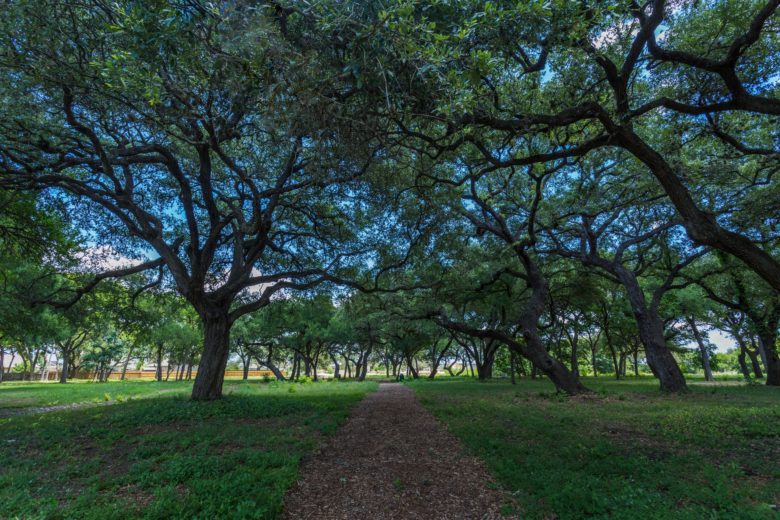

Texas Trees: The History of Heritage Oaks
Texas Trees: The History of Heritage Oaks
Heritage Oaks Park, in Schertz, Texas, is just 13 acres, but if the trees could talk, they would be able to take you through the better part of the past couple millennia. Unsurprisingly, the park is home to hundreds of Texas Heritage Oaks and offers an enchanting setting for visitors to stroll, picnic, or reflect in serene surroundings. Heritage Oaks Park and The Crossvine are both committed to preserving these natural giants.
Mature oak trees have always been a vital part of the Texas landscape. They provide critical shade in summer months and their beauty marks whichever part of the horizon they inhabit for centuries. But what certifies a tree as ‘heritage’? Well, it varies from county to county and city to city. In Schertz, for a tree to be deemed a “Heritage Tree,” it must have a trunk width of at least 24 inches when measured at least four feet from the ground. But while these measurements may seem impressive, they barely tap into the longevity of these trees’ lifecycle, and why it’s so important to protect and maintain them. Most heritage trees— particularly oaks—take about 70 years to mature. Generally speaking, it’s safe to say a heritage oak has been around longer than any human measuring it. Most oaks don’t even produce fertile acorn crops until they pass the half-century mark.
While we admire their addition to our iconic Texas landscapes, the history of oak trees is not entirely centered around their beauty. Oaks were popular for lumber once. Their wood is both durable and malleable, making it ideal for boat hulls, while still providing ample protection from weather elements. The USS Constitution, or “old ironsides” was actually made of oak. Today, oak isn’t really in danger from over foresting but rather from disease, such as Oak Wilt Disease, which happens when fungi attack the vascular system of the tree. In defense, an oak will plug its vascular system in an attempt to stop the fungi, only to cut itself off from water and nutrients. Through preservation and attentiveness, most diseases can be prevented and are rare to begin with—hence the trees’ natural longevity.
At 700 years, an oak is considered to have reached old age. However, total lifecycle from acorn to death for an oak is estimated at a little over 1,000 years. There’s a reason to preserve these beautiful trees for more reasons than their beauty. We are in the presence of natural history.